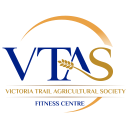There’s a lot of misinformation out there about health and wellness. Today we’ll bust five common health myths and misconceptions to help you stay on the right track in your fitness journey.

1. Muscle turns to fat if you don’t use it.
Muscle and fat are two completely different types of tissue. They are built in different ways and, while they may occupy the same areas of the body at any given time, they are not related.
Muscle is made of proteins, which in their smallest form is a lot of amino acids stuck together. And fat is made of, well, fat! The misconception that muscle turns to fat comes from the fact that when you lose muscle mass you may replace it with fat. However, one does not become the other.
Muscle is a great metabolism booster – it helps you burn fat even when you aren’t exercising. When you lose muscle mass, your metabolism drops, causing you to be more prone to putting on weight in the form of fat deposits.
2. You can target fat reduction in a certain part of your body.
“If I do lots of sit-ups, I’ll lose my belly fat.” Sorry, but the human body just doesn’t work that way. It’s an incredible machine, but even it can’t differentiate regions from which it should pull fat more than others.
It is true that people store and use fat differently, so fat will be pulled from some areas more than others depending on the person. Some store fat on their hips, others in their legs and still others in the chest area. Men tend to store fat in the stomach region, while women typically store fat on the hips and butt.
When the body needs energy from ‘aerobic exercise’, which is commonly known as ‘fat burning exercise’, it simply hunts down anything it can find goes to work.
3. Lots of cardio is the best way to lose weight.
Myth! While cardio is not going to harm your weight loss goals, it’s important to understand the role metabolism plays in weight loss and how to maximize it.
It is a fact that exercise increases your metabolism. Notice how you feel warm during and after a workout? That comes in part from your metabolism – the breakdown of substances to create energy. Muscle also increases your metabolism because, unlike fat which sits in one place like a lazy lump, it’s like a little factory constantly working in your body that needs energy to keep operating.
So, here are two important things to remember:
- The more muscle you have, the more energy you burn. At rest, that energy comes from fat stores, so you are burning fat without even trying.
- Cardio activity will increase your metabolism for the time of your workout and about four hours afterwards. However, strength training activities will increase your metabolism during the time of your workout plus you’ll get the ongoing effects of having more muscle (a.k.a. keeping the factory operating).
4. Workouts should be at least an hour long.
Wrong, wrong, wrong. For those doing strength training with the goal of increasing muscle mass and tone, you require certain hormones in your body to be available in order to get results. Insulin, growth hormone, testosterone and IGF1 (an important muscle building hormone) are all depleted after a good 45-minute workout. These are the building blocks of building muscle and they are all used up after a good 45-minute session.
You can continue to workout if you want and it will keep your metabolism raised for a longer time, but you will have lost your ability to gain muscle.
5. Supplements are essential for maximizing your workout.
The truth is, there is nothing you can get from legal supplements that you can’t get from a balanced, well-rounded diet. You hear a lot about people taking creatine before workouts, protein afterwards and any number of things in between. While studies show small positive results from taking supplements, your body should be getting what it needs from your diet.
The only people supplements help are those who aren’t getting the nutrients they need in a natural way. Not to mention that supplements are really expensive!
Well, there you have it – five common health myths and misconceptions busted. Use this newfound information to alter your perceptions and improve your fitness approach.



